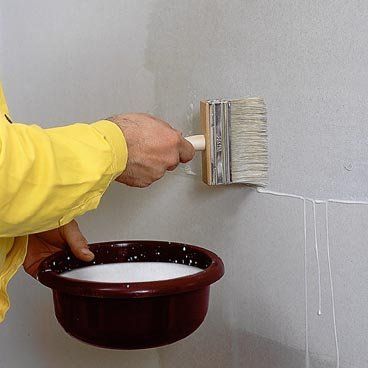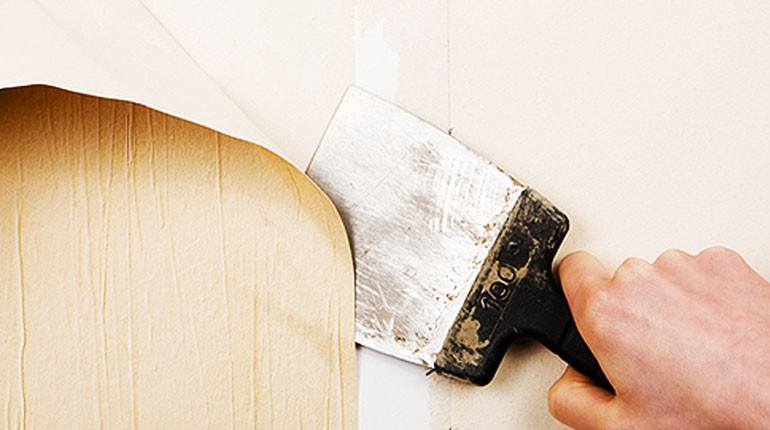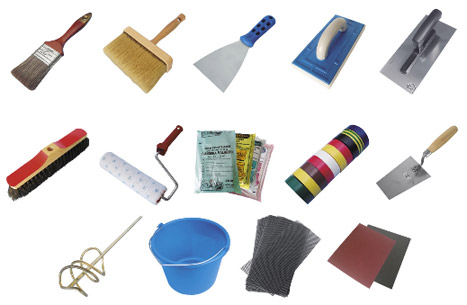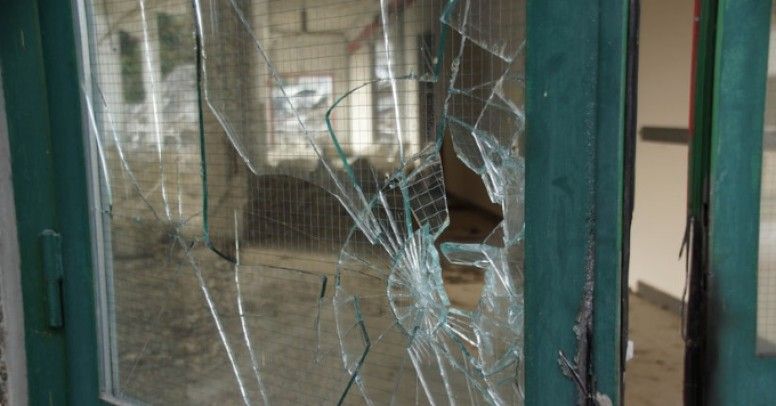 Przygotowanie powierzchni rozpoczynamy od usunięcia wszystkich gwoździ, haków i wkrętów od kołków rozprężnych oraz zaszpachlowania otworów po nich. Nie szpachlujemy tych, które jeszcze posłużą do zawieszania przedmiotów. Małe otworki na ogół się wypełnia kitem akrylowym. Większe – szpachlówką do murów, kupowaną jako gotowy preparat w sklepach malarskich lub sporządzoną samemu z zaczynu gipsowego.
Przygotowanie powierzchni rozpoczynamy od usunięcia wszystkich gwoździ, haków i wkrętów od kołków rozprężnych oraz zaszpachlowania otworów po nich. Nie szpachlujemy tych, które jeszcze posłużą do zawieszania przedmiotów. Małe otworki na ogół się wypełnia kitem akrylowym. Większe – szpachlówką do murów, kupowaną jako gotowy preparat w sklepach malarskich lub sporządzoną samemu z zaczynu gipsowego.
Jeżeli ściany i sufity nie wykazują większych ubytków i uszkodzeń, są równe i pokryte starą farbą klejową lub wapienną, dobrze się trzymającą podłoża, powierzchnię wystarczy dokładnie odkurzyć, a następnie zmyć pędzlem lub gąbką umoczoną w 2-3% roztworze wodnym mydła malarskiego. Można ją też zagruntować farbą podkładową. Do ścian uprzednio malowanych farbą emulsyjną warto użyć preparatu alkalicznego odtłuszczacza do zmywania ścian, sufitów, powierzchni drewnianych i metalowych.
Zamiast tego możemy całą ścianę i sufit przeszlifować drobnoziarnistym papierem ściernym, nawiniętym na drewniany klocek. Następnie dokładnie je odkurzamy.
Często powierzchnie – zwłaszcza nowe, ale także stare, wcześniej nie malowane ale użytkowane przez dłuższy czas – wymagają zagruntowania. Gruntownik je wzmacnia. Wnika bowiem w głąb, a zarazem zmniejsza nasiąkliwość podłoża. Gruntowania wymagają zawsze powierzchnie ścian z płyt gipsowo-kartonowych.
Powierzchnie małe gruntuje się na ogół płaskim pędzlem szerokości 10-15 cm. Do większych należy używać pędzla ławkowca, trzonkowego lub innego dużego, zapewniającego szybką pracę. Można też zastosować większy wałek futerkowy.
Przed malowaniem farbą gruntuj ącą, powierzchnię ścian i sufitów należy twardą szczotką, np. ryżową, oczyścić z kurzu i brudu, a następnie odkurzyć.
Powierzchnie, uprzednio malowane farbami na bazie żywicy, alkidu lub oleju (np. lamperie), powinniśmy umyć preparatem Malartvatt lub Malarsoda, a następnie dokładnie spłukać czystą wodą. Powierzchnie błyszczące warto uprzednio zmatowić papierem ściernym.
Powierzchnie uprzednio białkowane lub malowane farbami klejowymi trzeba przygotować przez zeskrobanie starych powłok i zmycie wodą z dodatkiem mydła malarskiego, a następnie zagruntować farbą podkładową. Powierzchnie, które mamy gruntować, muszą być czyste i suche. Pylące lub pokryte łuszczącą się, starą powłoką malarską należy ostrą szczotką oczyścić dokładnie i starannie, aż do zwartego podłoża, a następnie odkurzyć i zmyć wodą.
Otwory po kołkach i gwoździach oraz mniejsze ubytki i pęknięcia powierzchni, możemy również naprawiać gotowymi szpachlówkami, nakładanymi małymi szpachlami stalowymi lub plastikowymi.
Do tego rodzaju napraw można polecić między innymi szpachlówkę Snabbfix Beckers. Jest to szybkotwardniejąca masa koloru białoszare-go, przeznaczona do naprawy zarówno ścian, jak i sufitów, a także fundamentów itd. Odporna na zimno, można jej więc używać na zewnątrz budynku. Jest łatwa w nakładaniu i się nie kurczy. Można ją więc nakładać grubymi warstwami. Cały ubytek wypełnia się nią od razu, za pomocą szpachli lub pacy stalowej, a następnie wyrównuje gładko z powierzchnią ściany. Gdy powierzchnia robi się jasna, można przystąpić do szlifowania drobnoziarnistym papierem ściernym.
Ma dobrą przyczepność do podłoża, tak że daje się w nią wbijać gwoździe, wkręcać wkręty i wiercić otwory.
Produkowana na bazie specjalnego cementu z dodatkiem polimerów, ma postać suchej mieszanki do zarobienia wodą na miejscu pracy.
Szpachlówkę można stosować również do naprawiania naroży – najczęściej uszkadzanych części ścian. Przy większych uszkodzeniach tynku na narożach możemy niezbędnych napraw dokonać pryz użyciu innego rodzaju specjalistycznych cementów montażowych.






